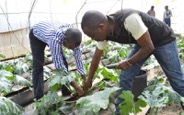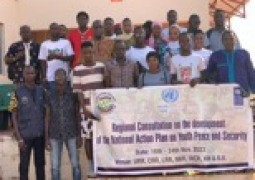
Overall, youth earn “mixed livelihoods” from various sources on-farm, off-farm, and non-farm and with self-employment and migration playing particularly important roles.
While there is some debate that youth are not attracted to agriculture and are leaving the sector, the evidence paints a nuanced picture.
Some countries are indeed experiencing trends of youth turning away from agriculture and/or working fewer hours per week in agriculture than older age groups. However, the absolute numbers of youth who are dependent on farming or livestock production is likely to increase because of population growth.
Primary data across multiple countries confirm that youth are not attracted to low-wage, low-value production, and are instead attracted to modernization/ new practices, use of technology, and opportunities for “quick money” with relatively higher earnings than staple crops.
Youth decisions to engage in work are also shaped by the environment in which they live: the economic and political context, social norms and customs, the nature of the agri-food system, institutions, laws and regulations, parental and peer influence, media, previous experiences, and gender relations.
Overall, the literature consistently agrees that the top three key constraints to youth engagement in agriculture are access to land, finance, and skills.
While there is some debate about whether these structural barriers are specific to youth (as older populations are marginalized in the same ways), youth- and gender-specific issues appear in each of these areas. The agriculture sector writ large is characterized by a number of structural barriers, and these barriers are often more pronounced for specific subgroups, including youth who experience vulnerability across multiple fronts. Broadly speaking across all constraints, there is a need for youth engagement in collective action and advocacy for agriculture policy.
More evidence is needed on youth participation in agri-food systems, and especially the benefits of taking a youth mainstreaming and/or youth-focused approach to agri-food systems development.
Future research must also acknowledge the diversity of different youth segments and the different contexts in which they operate.
To this end, policymakers must avoid a one-size-fits-all solution, distinguishing between long-term approaches (employment through on-farm productivity) versus short-term approaches (youth self-employment and entrepreneurship), as well as “demand-side” versus “supply-side” solutions, tailored to the specific context of the country and its agri-food system, the local context and its stakeholders, and the target youth segments.
There are youth-specific issues associated with agriculture transformation and a need to differentiate how various youth segments engage in the agriculture sector based on structural constraints.
The literature puts forth a framework through which to analyze young people’s abilities to exploit opportunities within the agriculture sector.
It highlights young people’s engagement with agri-food systems, based on the interplay between the macro context, local context and social structures.





